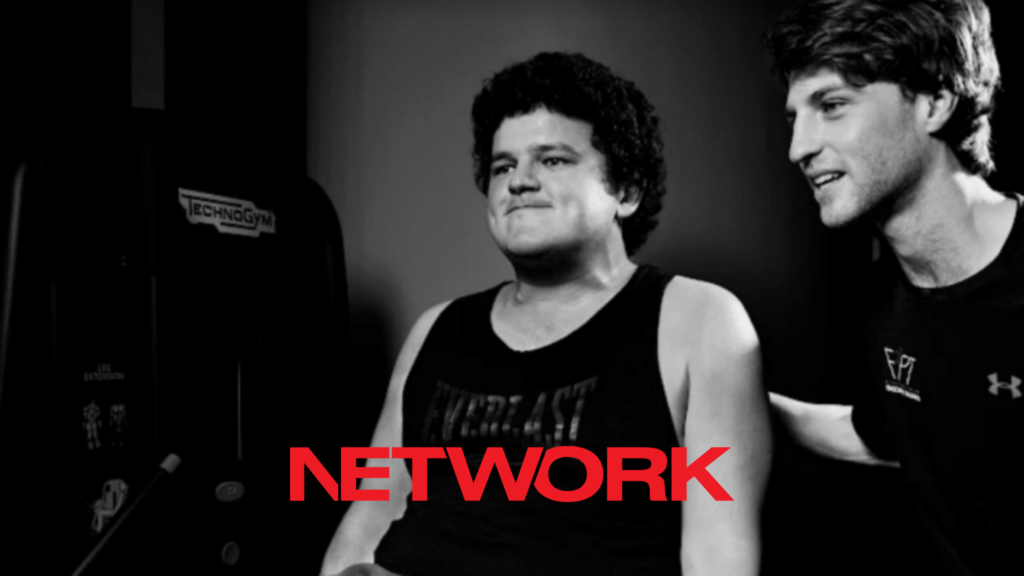The Fitness Zone

Grab the opportunity to make your fitness business more inclusive
By making a few simple, low or no-cost changes, gyms can make people with unique needs feel more welcome, writes fitness inclusivity advocate Tommy Trout.
“Can we please leave? It’s too loud for me”
I stopped and stared at my little brother Jackson. It was only after he said this that I realised how loud the music was. Something that I had barely noticed was stopping him from feeling comfortable. Jackson is on the autism spectrum and is extra sensitive to noise, crowds and lights. Too much of any of these can leave him feeling overwhelmed and wanting to retreat.
We sought out the gym manager to ask if they would be able to turn the music down. After I explained why, she agreed, and my little brother was put at ease and had a great workout. Importantly, not a single other gym goer was impacted, as most were listening to music on their own headphones anyway. With a flick of a switch, that gym became just a little bit more inclusive.
That simplicity is at the heart of what inclusion means and how the fitness industry can improve. Turning the music volume down for a short time so that someone feels comfortable enough to complete their workout is just one example of a minor adjustment that standard commercial gyms can make in order to make someone with unique needs feel more welcome.
When we think about accessibility and inclusion in the fitness industry, for most of us, one of the first things that comes to mind is wheelchair ramp access. While this is important for gym goers in a wheelchair, it is just the tip of the iceberg. The great thing about inclusion and accessibility, however, is that it can be really simple and doesn’t always require large or costly structural changes. A small adjustment to the usual way of doing things can often make a world of difference.
The bridge to inclusion
I founded WeFlex, a service that connects people with a disability to mainstream fitness and health providers, in order to help bridge the gap between current offerings and currently underserved needs. WeFlex has developed training modules for personal trainers and gym staff to provide them with the tools they need to be more inclusive in their practice.
At the heart of everything WeFlex creates is the co-design process, which means the training is co-written with the people with the unique needs we wish to serve. During these co-design sessions we consistently hear the same comments as to how we can be more inclusive as personal trainers and gym staff.
“Treat me like you would anyone else”
“Be nice to me”
“Please have patience with me”
“Look beyond my disability”
It sounds simple until you realise they are saying this because, to date, this treatment has not been their experience. We shouldn’t need training to be nice to someone, or to see the person instead of the disability.
Interestingly, what we haven’t heard about from people in terms of barriers to gym entry, is cost. The people we speak to would happily pay for a gym membership and PT services but choose not to, as their needs are not being met. My brother has been a paying member of his local Anytime Fitness club for nearly seven years now. He loves it and has developed real brand loyalty. Why? Because the club manager, Cade, was nice to Jack. Cade checked in on him and spoke to him like he would anybody else. It really can be that simple.
3 steps to improving your inclusivity
So, I ask you, as somebody who likely works in a fitness facility, if someone in a wheelchair came into your gym – would you assume they were there to train? Or would you ask if they were lost? Would you think it was out of the ordinary? Or would you not be fazed that they were in a wheelchair? You really shouldn’t be, because after all, what’s the point of the wheelchair ramp if they are not welcome on the inside? That my friend is a wheelchair ramp to nowhere!
To help you get started, here are three ideas you might like to try to become more inclusive and accessible for people living with a disability.
1. Talk about it
Have you ever mentioned in your marketing or communications that you are open to people with disability? Over 35% of households in Australia have someone with a disability living in them. So, when you promote an inclusive gym, you are speaking the language of over 1/3 of your current members. Not only is that a very warm lead for new members – it also builds brand loyalty for their family and friends who are already members.
2. Offer sensory-friendly experiences
A few years ago, Woolworths trialled ‘sensory friendly’ hours at their stores. Music was turned off and the lights were dimmed to allow people with sensory sensitivities to shop with more comfort. What they found was these hours became really busy, as they were preferred by a lot of people who didn’t even have those sensitivities. Considering the majority of people at the gym train with headphones on, would many people even notice this simple change, let alone be upset by it?
3. Make your website accessible to all
Most people with disabilities and their families will research your facility online in advance of visiting. By having one of the many Google Chrome extensions, such as UserWay, that allows for accessibility features, you can show potential customers that you are keen to meet their unique needs.
Inclusion is at the heart of WeFlex, a business I recently founded to improve the length and quality of life for those living with disability. We all know the power of regular exercise and improved fitness, and it is my life’s mission to help connect people with unique needs to the immense benefits that the fitness industry has to offer. More importantly, this will help create somewhere people with disabilities can go and feel included as part of society. Sometimes, I feel that my brother’s world is very small and by making the gym a more inclusive place, his world gets that little bit bigger.
Tommy Trout
Tommy is passionate about creating a more inclusive world after personal experience seeing the health inequality for people with disability. Seeing a clear gap in the market, Tommy founded WeFlex, a business that connects people with disabilities with mainstream health and fitness providers and aims to create a more inclusive fitness industry.
Read more articles
Disclaimer: Where Certificate III in Fitness, Cert III/Cert 3, or Fitness Coach is mentioned, it refers to SIS30321 Certificate III in Fitness. Where Certificate IV in Fitness, Cert IV/Cert 4, or Personal Trainer is mentioned, it refers to SIS40221 Certificate IV in Fitness. Where Master Trainer Program™ is mentioned, it refers to Fitness Essentials and SIS40221 Certificate IV in Fitness. Where Master Trainer Plus+ Program™ is mentioned, it refers to SIS30321 Certificate III in Fitness and SIS40221 Certificate IV in Fitness. Where Certificate IV in Massage or Cert IV/Cert 4 is mentioned, it refers to HLT42021 Certificate IV in Massage Therapy. Where Diploma of Remedial Massage is mentioned, it refers to HLT52021 Diploma of Remedial Massage.











